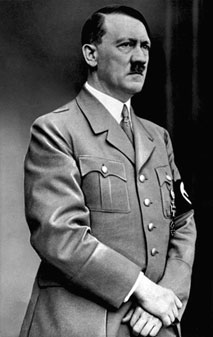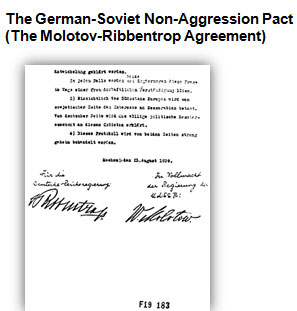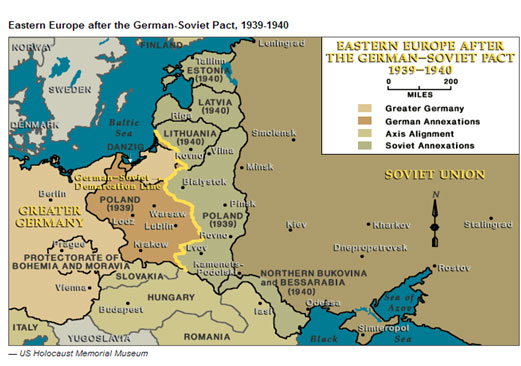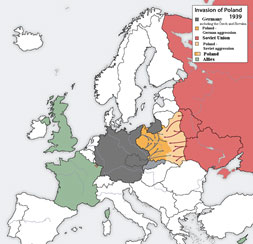

After becoming the Chancellor of Germany in 1933, Hitler eliminated the Reichstag, the German parliament, effectively removing any opposition to his regime. Hitler subsequently began secretly rebuilding the German military and replenishing its armament. These actions were in complete violation of the terms of the Treaty of Versailles.
Going unchecked by other European leaders, Hitler continued to aggressively violate the terms of the treaty.
After secretly rebuilding his military, Hitler then reintroduced conscription in 1935.
In 1936, Hitler ordered German troops to enter the Rhineland near the France-Germany border.
Hitler wanted to take back the land that had been taken away from Germany. In March 1938, German troops occupied and later annexed Austria. Hitler promised this was his last attempt at expansion. When the other countries did not respond, Hitler continued his expansion efforts.
In September 1938, Hitler laid claim to the Sudetenland region of Czechoslovakia, threatening war if his demands for the region were not met. European leaders met with Hitler. Eventually, they gave in to his demands in an effort to prevent another war. The compromise was called the Munich Agreement, which allowed Hitler to take the Sudetenland if he promised not to occupy the rest of Czechoslovakia.
Ignoring the Munich Agreement, Hitler invaded the remaining regions of Czechoslovakia in March 1939. Again, no action was taken against Hitler. The leaders of Great Britain and France then became concerned that Hitler might invade Poland. They promised to take action against Hitler if he pursued an invasion of Poland.

In August 1939, Hitler, with the threat of a war upon his invasion of Poland, met with Soviet leaders and agreed to a secret treaty. The German-Soviet non-aggression pact was an agreement in which the two parties agreed not to attack each other. In addition, the Soviet Union agreed to assist Germany in the event of an attack by Great Britain or France. The pact also allowed Germany and the Soviet Union to divide Eastern Europe and annex several countries respectively.

Think about this - Why would Hitler secretly sign a non-aggression pact with the Soviet Union? Based on what you have learned about Hitler, do you believe Germany upheld its end of the non-aggression pact?


On September 1, 1939, Germany invaded Poland. The invasion prompted France and Great Britain to declare war on Germany on September 3, 1939, and World War II began.
In accordance with the German-Soviet non-aggression pact, the Soviet Union later invaded Poland from the east. However, Hitler would prove yet again that he was not a man of his word when Germany invaded the Soviet Union in 1941.
By the time World War II began, Germany occupied most of Europe and was poised to take on the opposing powers of war. Hitler’s rapid occupation was met with little or no resistance.
The next section will examine the policy of appeasement and its impact on World War II.
Sources of images used for this section as they appear, top to bottom: